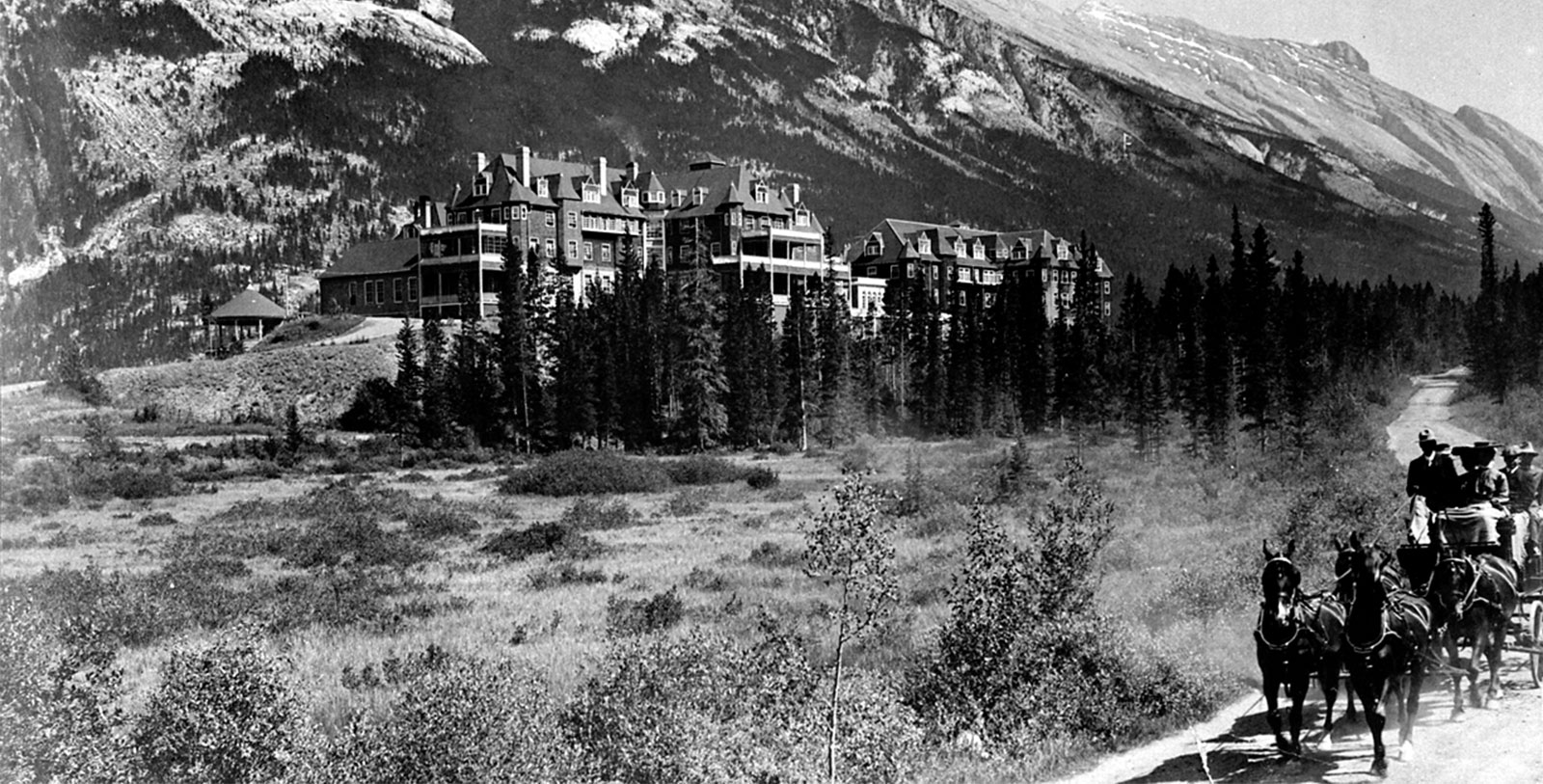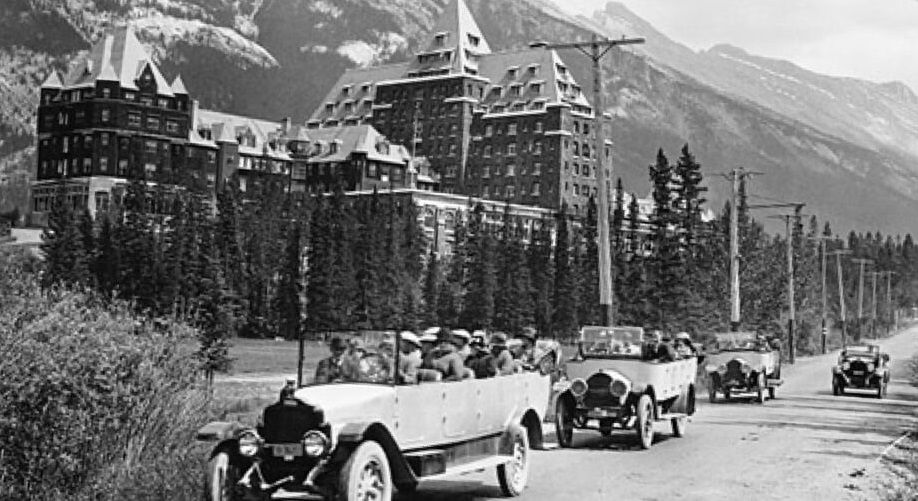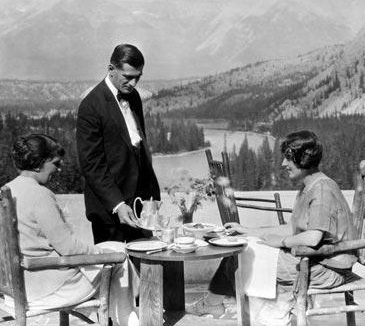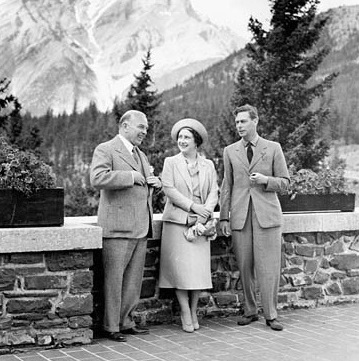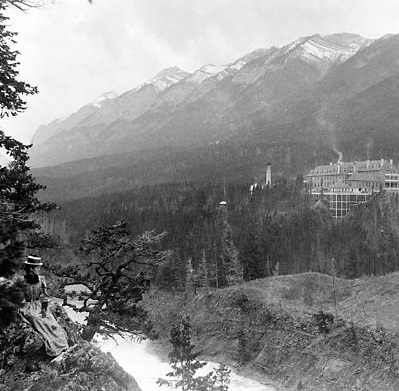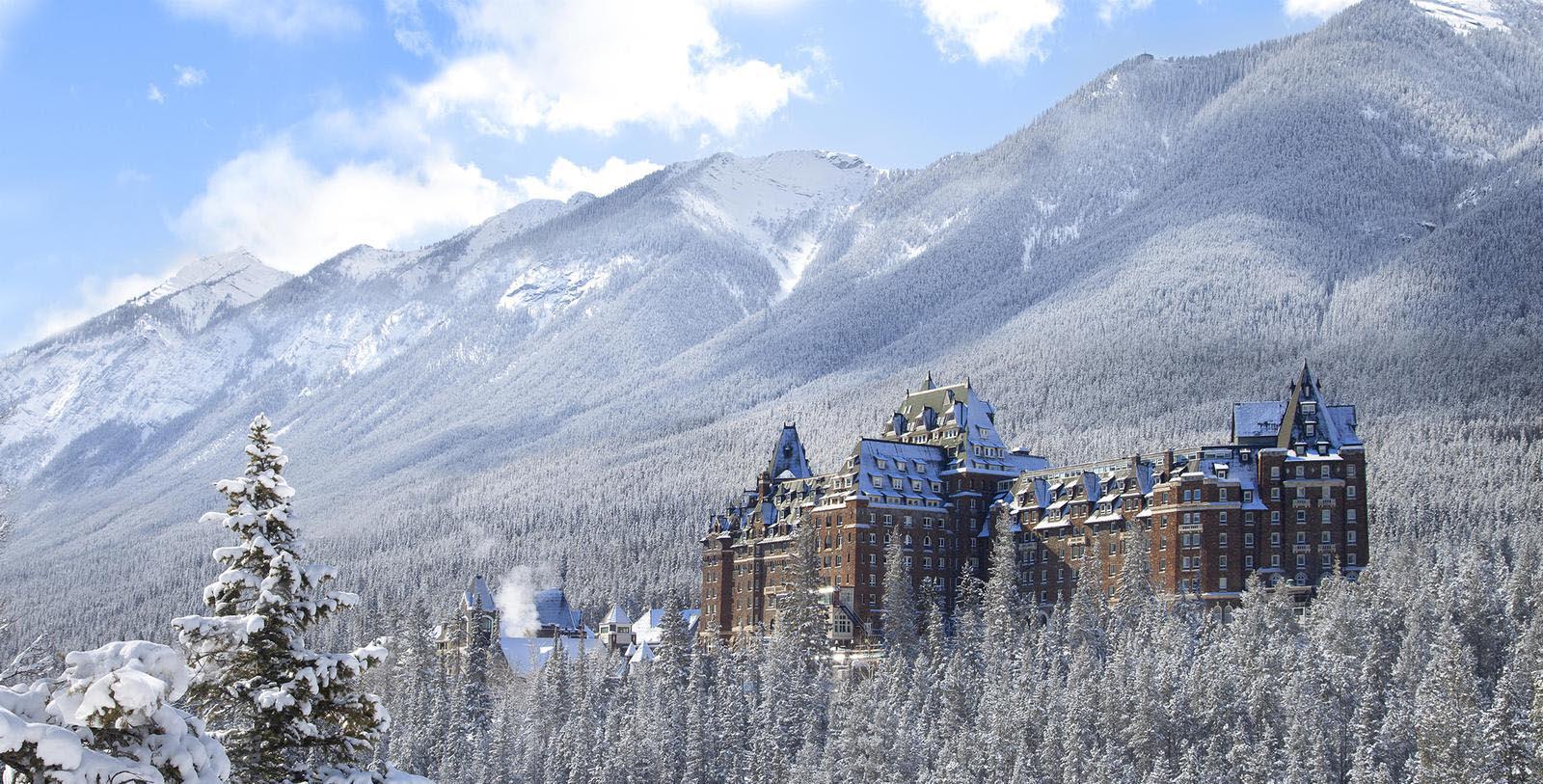Receive for Free - Discover & Explore eNewsletter monthly with advance notice of special offers, packages, and insider savings from 10% - 30% off Best Available Rates at selected hotels.
history
Discover the Fairmont Banff Springs, which has been among Canada’s most luxurious holiday destinations since it opened in the 1880s.
Fairmont Banff Springs, a member of Historic Hotels Worldwide since 2018, dates back to 1888.
VIEW TIMELINEThe Chambermaid | #MyBanffSprings
Carol Shipley worked as a chambermaid at the Banff Springs Hotel in 1955. Sixty-four years later, she returned to Fairmont Banff Springs and shared her story of what it is was like living and working in Banff National Park in the 1950s.
WATCH NOWA National Historic Site of Canada, the Fairmont Banff Springs has been a shining example of Canadian hospitality from its inception. William Cornelius Van Horne, the General Manager of the Canadian Pacific Railway, first considered constructing a grand hotel in the Canadian Rockies when several employees of his railroad stumbled across several mineral springs in 1883. Noticing a great opportunity to facilitate travel along the Canadian Pacific Railway, Van Horne immediately set about constructing a brilliant grand dame that would be one of the world’s most luxurious. As such, he commissioned blueprints for an impressive hotel that would be situated at the convergence of the Bow and Spray rivers. Architect Bruce Price lead the design team, who relied upon Châteauesque-style architecture as the source of his inspiration. Construction commenced in 1886 and concluded some two years later. As soon as it debuted as the “Banff Springs Hotel” in 1886, it rapidly became one of the top three mountain resorts in North America.
From 1900 to the 1920s, several adjustments were made in order to update the hotel and its offerings to keep its longstanding status. Among the first construction projects undertaken around that time was the development of the hotel’s iconic 11-story tower. Designed by architect Walter Painter, it possessed an amazing array of woodwork and limestone native to Alberta. Yet, much of this work was significantly compromised when an accident afflicted the entire hotel in 1926. Fortunately, an engineer of the Canadian Pacific Railway—John W. Orrock—restored the hotel back to its former glory. He managed to unify the appearance of the Banff Springs Hotel, giving it the current façade that is on display today. The hotel continued to endure through the Great Depression of the 1930s, although its stature never diminished. It continued to host countless luminaries from throughout the world, including King George VI and his wife, Queen Elizabeth The Queen Mother, during their Royal Tour of Canada in 1939.
The Banff Springs Hotel briefly shutdown in 1942 as a result of the scarcity in labor wrought by World War II. It would not reopen until the war ended in 1945. Though it took most of the 1950s and 1960s to reclaim its former status as one of the greatest resort getaways in the North Americas, the war had not completely ruined the hotel's charm. Significant changes to the hotel, which adapted it to the economics of the era, provided it with new life. A pivotal point came in the 1970s, as this was the when the Banff Springs Hotel began to stay open year-round, offering guests a bevy of new winter activities. More renovations and expansions were done a decade later, providing guests with the most cutting-edge accommodations and amenities of the time.
In the 1990s, Ted Kissane became the manager of the Banff Springs Hotel. He subsequently restored the majestic hotel, giving it the nickname the “Castle in the Rockies.” Another series of expansions followed shortly thereafter, which saw the addition of a new spectacular facility called the Banff Springs Conference Center. In 2011, Canadian Pacific Limited—the parent company to Canadian Pacific Hotels—merged the brand with Fairmont Hotels and Resorts following a massive corporate reorganization. That fusion resulted in the Banff Springs Hotel getting renamed as the “Fairmont Banff Springs.” With over 100 years in hospitality, the Fairmont Banff Springs staff are still trained in exceptional service and excellence. Its proven track record is the proof. The rebirth of the hotel time and again has provided guests with an incomparable access to the beauty of the Canadian Rockies. A proud member of Historic Hotels Worldwide, the Fairmont Banff Springs continues to be among the best historic destinations in all of Canada.
-
About the Location +
For more than a century, the Fairmont Banff Springs has resided deep within the verdant, snow-capped mountains of Banff National Park. A UNESCO World Heritage Site, Banff National Park encompasses some 6,600 square miles in the famed Canadian Rockies. Some of the tallest mountains in North America are in the park, including Mount Sir Douglas (11,175 feet) and Mount Columbia (11,365 feet). Developed as a result of glaciation over several thousand years ago, most of these geographic formations are composed of substances like limestone and shale. Hikers today note that the mountains in this part of the world are rugged with many jagged geological features, yet they still manage to create an incredibly tranquil atmosphere. Banff National Park is also known for more than just its pristine alpine summits, for it is filled with countless wetlands, meadows, and forests. The park is home to an active glacier field called the Columbia Icefield, which is located along its northern border. Fishing hotspots abound throughout the region at such magnificent bodies of water like the Bow and Red Deer Rivers, as well as the renowned Lake Louise.
Indigenous people have long lived in the lush forests of the Canadian Rockies, using its abundant resources for centuries. But the area did not become a Canadian National Park until the 1880s, when the Canadian Pacific Railway started laying track through the Continental Divide. Part of the company’s plan involved directing the nascent railway through the small mining settlements that proliferated throughout the Bow River Valley. In 1883, three workers employed by the Canadian Pacific Railway stumbled upon a series of hot mineral springs in an area on Sulphur Mountain that soon came to be known as “Siding 29.” William Cornelius van Horne quickly seized upon the economic opportunity and began constructing several grand hotels in the region to spur passenger travel along the railroad. But Horne did more than just commercially develop the land—he also petitioned the Canadian government to conserve the region as a national park. Horne succeeded and the region became Canada’s first national park in 1885. This spectacular destination has since attracted millions of visitors from around the world due to its inherent national beauty and tranquil splendor.
-
About the Architecture +
Fairmont Banff Springs is one of Canada’s last surviving grand railway hotels. Originally developed by the Canadian Pacific Railway in 1887, this fantastic historic destination is composed of two sections: an 11-story tower and the main lodging area. The first part of the building to emerge was the main lodging area, which William Cornelius van Horne—General Manager of the Grand Pacific Railway—charged Bruce Price to develop. Construction on this magnificent building began in 1886, and took several months to complete. When the dust finally settled, Price’s building stood as a wonderful five-story, Châteauesque-style masterpeice. Price’s work was then expanded upon by architect Walter Painter some 20 years later, who specifically designed the Fairmont Banff Springs’ iconic tower. Construction on this magnificent structure began in 1911 and lasted for three years. Largely made of limestone and wood, the tower’s layout was originally influenced by Scottish baronial design aesthetics. Unlike the other historic sections of the hotel, the tower featured nothing like the French-inspired architecture for which it is now known. Its interior spaces even displayed some Renaissance Revival-style architecture, as the first-floor lounge resembled a Mediterranean arcade.
Due to an unfortunate mishap, the entire hotel had to undergo a thorough renovation in 1927. An engineer with the Canadian Pacific Railway—John W. Orrock—was subsequently tasked with saving the beautiful structure. Orrock replaced the dilapidated wooden frame with a steel one, which he filled with incredibly durable Rundle limestone. The team endeavored to restore much of the hotel’s structural elements, such as its Bedford flagstone flooring and fossil-filled Tyndall limestone. He also reoriented the entire layout of the main building, dividing it into two distinctive sections known as the north and south wings. Yet, Orrock’s most enduring legacy was his decision to unify the structure’s exterior appearance with a single architectural form. He chose to preserve the main building’s Châteauesque-style architecture, blending it seamlessly into the unique Scottish designs of Painter’s tower. Similar to many other Châteauesque-style hotels, the Fairmont Banff Springs soon came to resemble a grand manor from France’s Loire Valley. A series of steep copper roofs, dormers, and gables soon came to define the Fairmont Banff Springs’ façade, making it one of the most elite vacation retreats in Canada.
-
Famous Historic Events +
Royal Tour of Canada (1939): King George VI of the United Kingdom and his wife, Queen Elizabeth The Queen Mother, went on a grand journey of Canada prior to World War II. Their trip was part of a great strategy to reinforce the cultural ties that bound Canada and the United Kingdom together, as well as to emphasize the former’s increasing independence from the latter. While many other royal tours had occurred in Canada previously, this one was unprecedented in its size and scale. Thousands lined the streets of every major city that the royal entourage visited, with entire roads shutdown just to manage the crowds. King George IV and Queen Elizabeth arrived in Québec City on May 17 and started traveling west along the Canadian Pacific Railway. The Royal Family had arrived in the Canadian Rockies by the end of the month, stopping in Banff National Park on May 26. King George VI and Queen Elizabeth subsequently spent the whole day touring the Fairmont Banff Springs and its surrounding environs. The Royal Family then proceeded to British Columbia, arriving in Vancouver on May 30. Afterward, the King and Queen headed east to visit additional cities and towns in Atlantic Canada. The two also briefly traveled through the United States en route to the maritime provinces, which marked the first time a British monarch had ever stepped foot inside the country. On June 15, King George VI and Queen Elizabeth The Queen Mother ended their extravaganza in Halifax and boarded a ship back to the United Kingdom.
-
Famous Historic Guests +
Marylin Monroe, actress known for her roles in Bus Stop and Some Like It Hot.
Robert Mitchum, actor known for his roles in such films like El Dorado, The Night of the Hunter, and Cape Fear.
Joe DiMaggio, outfielder for the New York Yankees best remembered as the “Yankee Clipper.”
Gene Sarazen, winner of seven major golf championships that include the U.S. Open, the British Open, the PGA Championship, and the Masters Tournament.
Bobby Locke, winner of four major golf championships, specifically four British Opens.
Princess Patricia of Connaught, granddaughter of Queen Victoria I of the United Kingdom.
Prince Arthur, Duke of Connaught and Strathearn and 10th General Governor of Canada (1911 – 1916)
Queen Elizabeth, The Queen Mother
King Edward VIII of the United Kingdom (1936; abdicated and became Duke of Windsor)
King George VI of the United Kingdom (1936 – 1952)
-
Film, TV and Media Connections +
River of No Return (1954)
The Edge (1997)
The Great Goose Caper (2011)



















